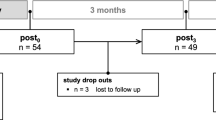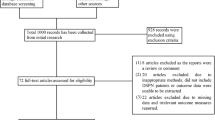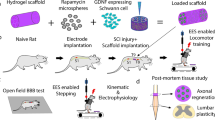Abstract
Objectives: To evaluate the diagnostic and prognostic contribution of motor nerve conduction studies (NCS) in addition to neurological examination in patients with acute paraplegia.
Methods: In 79 patients with acute onset of paraplegia due to traumatic or ischaemic damage of the conus medullaris/cauda equina (conus/cauda) or lesion of the mid-thoracic spinal cord (epiconal) neurological (initial and follow-up clinical motor and sensory scores; outcome of ambulatory capacity determined at least 6 months post-trauma) and electrophysiological examinations (motor nerve conduction velocity (MNCV) and compound motor action potential (CMAP) of tibial and peroneal nerves) were performed in parallel.
Results: Severe axonal motor neuropathies were significantly caused by conus/cauda lesions (loss of tibial CMAP in 71% and of peroneal CMAP in 68%) compared to patients with epiconal lesion (no loss of tibial CMAP and abolished peroneal CMAP in 14%). The CMAPs were deemed acutely pathological 4–14 days post-trauma and were indicative of the severity of conus/cauda lesion while the MNCV remained normal. Follow-up recordings (up to 1 year post trauma) revealed no significant change in the CMAP values. The clinical examination according to the American Spinal Injury Association (ASIA protocol) in contrast to the CMAP values was significantly related to the outcome of ambulatory capacity.
Conclusions: In contrast to patients with an epiconal SCI almost all patients with damage of the conus/cauda present a severe axonal neuropathy of the tibial and peroneal nerves. Pathological CMAPs develop as early as 1–2 weeks after onset of acute paraplegia. They allow, at an early stage, to differentiate between conus/cauda or epiconal lesion and to assess the severity of conus/cauda lesion. Thereafter follow-up examinations remain stable and a developing worsening of peripheral nerve or spinal cord function, eg due to post-traumatic syringomyelia, may be indicated by a secondary deterioration of CMAP values. The clinical examination, according to the ASIA protocol, in acute paraplegia patients, in contrast to the motor nerve conduction studies, is of prognostic value in predicting the outcome of ambulatory capacity.
Spinal Cord (2000) 38, 203–210
Similar content being viewed by others

Log in or create a free account to read this content
Gain free access to this article, as well as selected content from this journal and more on nature.com
or
Author information
Authors and Affiliations
Rights and permissions
About this article
Cite this article
Rutz, S., Dietz, V. & Curt, A. Diagnostic and prognostic value of compound motor action potential of lower limbs in acute paraplegic patients. Spinal Cord 38, 203–210 (2000). https://doi.org/10.1038/sj.sc.3100979
Published:
Issue date:
DOI: https://doi.org/10.1038/sj.sc.3100979
Keywords
This article is cited by
-
Mechanisms of Changes in the Segmental Neuromotor Apparatus in Patients with Posttraumatic Cervical Myelopathy
Neuroscience and Behavioral Physiology (2021)
-
Electrophysiological Study in Acute Spinal Cord Injury Patients: Its Correlation to Neurological Deficit and Subsequent Recovery Assessment by ASIA Score
Indian Journal of Orthopaedics (2020)
-
Lumbar spinal stenosis: Assessment of cauda equina involvement by electrophysiological recordings
Journal of Neurology (2007)
-
Neurologische und funktionelle Erholung nach Querschnittl�hmung
Der Orthop�de (2005)
-
Providing the clinical basis for new interventional therapies: refined diagnosis and assessment of recovery after spinal cord injury
Spinal Cord (2004)


